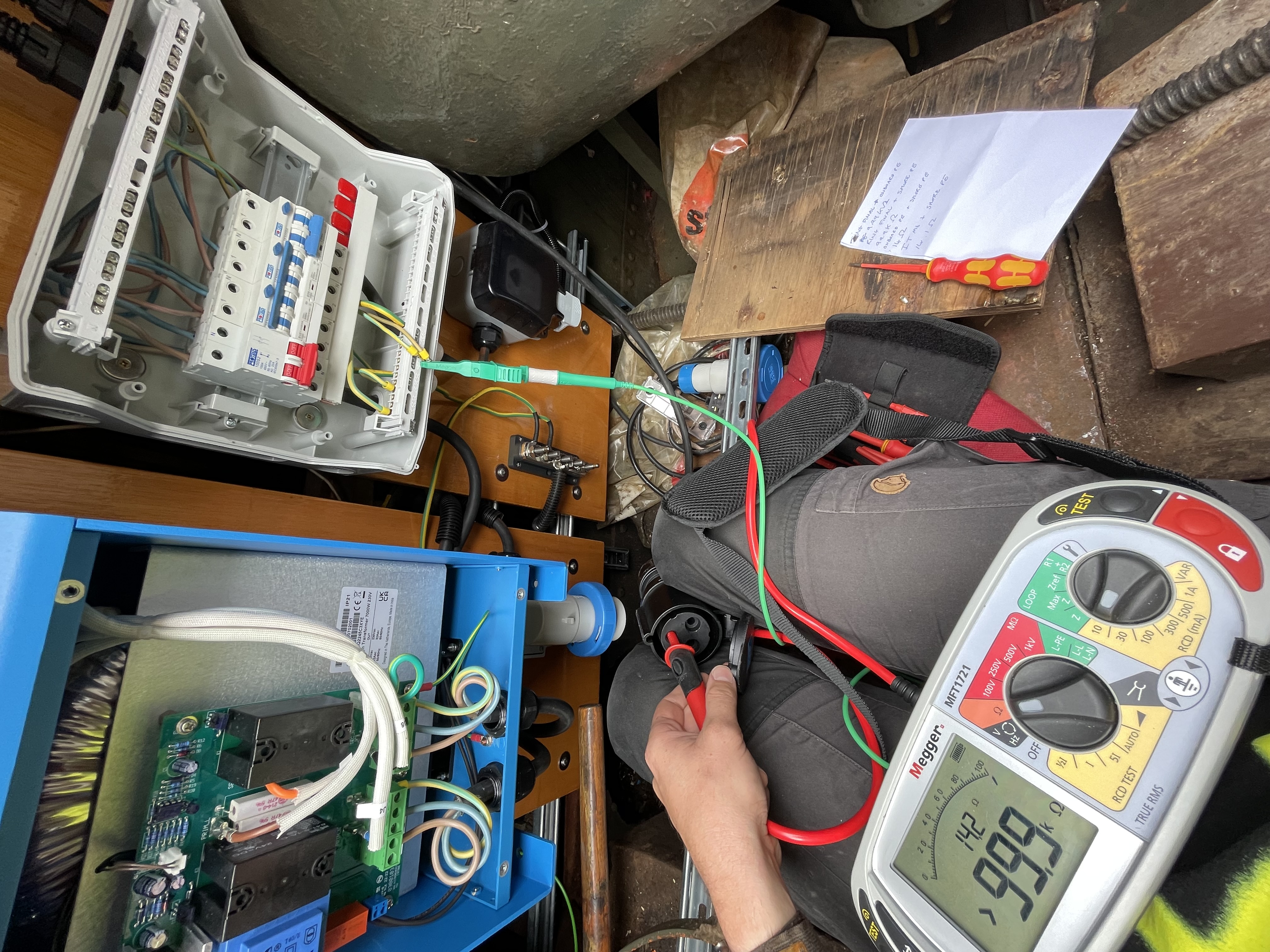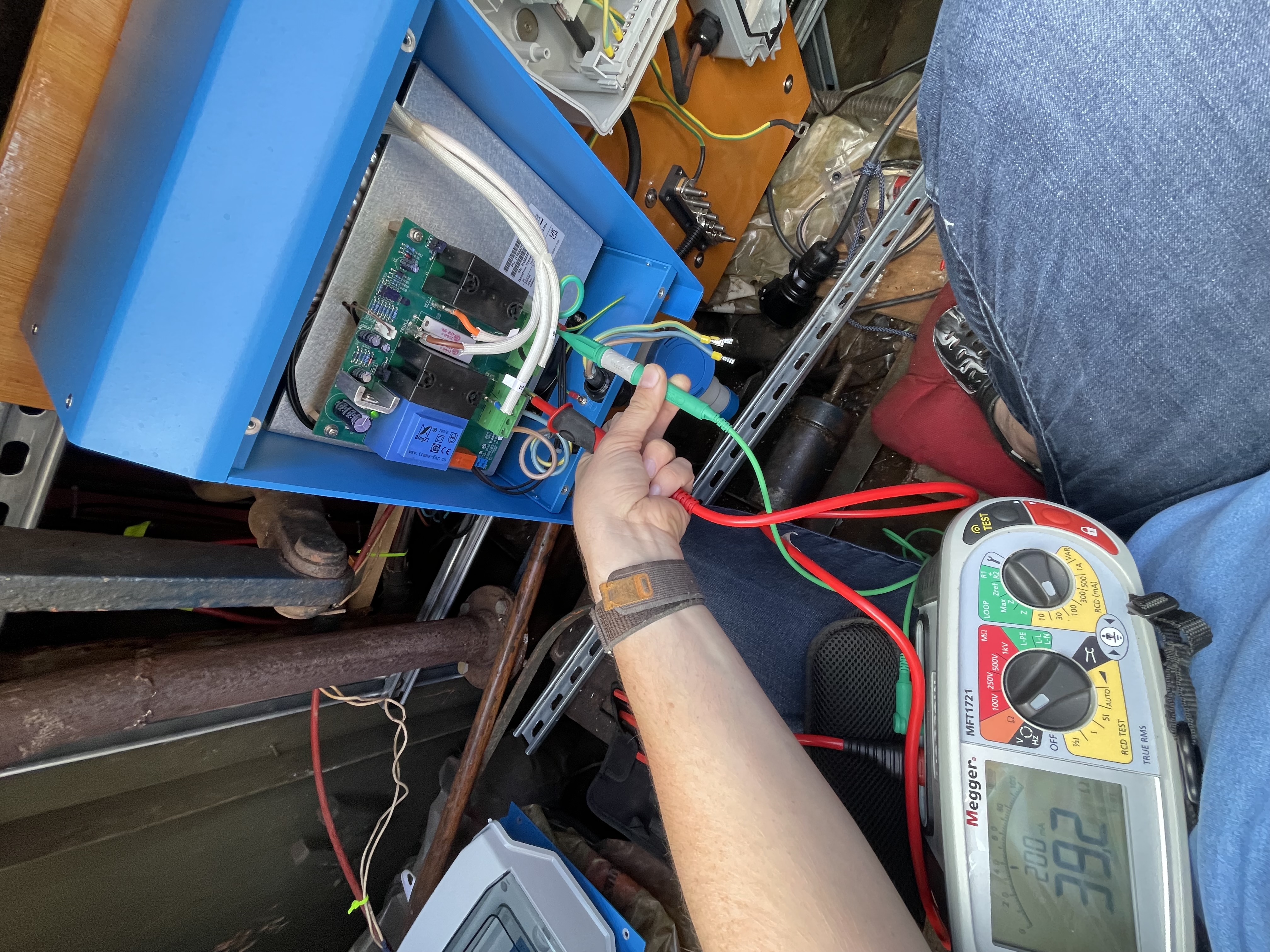Hello,
I have just fitted a Victron 7KW Isolation Transformer on my barge which has a metal hull. I tested for continuity between the two earths to test for the desired separation and got a reading of only 36.4 ohms (see photo attached). Jumper cable on the output side is fitted to J5-J7 spade connectors, casing earth is then bonding to a busbar which is then bonded to the hull by the engine mounting point. I would have expected either a complete open circuit reading or a high ohms reading. Do I have a problem somewhere with an alternate path to shore earth? What tests should I be carrying out and what readings should I expect to see?
Thanks,
Joe.

















